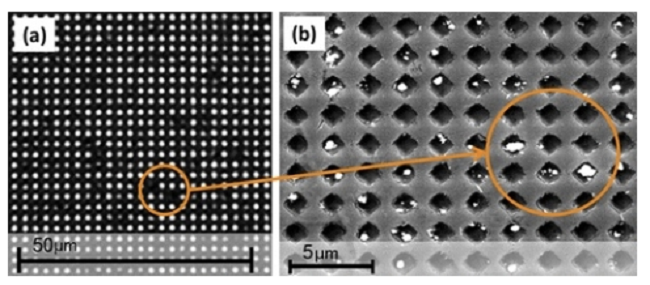
The line between smartphone and full-blown computer diminishes on a yearly basis; the phones have acquired quad-core processors over a year ago, and even now, the amount of RAM approaches that of a standard PC. But unlike our desktop computers, and dare I say laptops, smartphones are exponentially more portable. As a result, they are becoming a universal tool for everything: directions, photographs, banking, and in a short time, disease diagnosis.
Jiming Bao, Cullen College of Engineering’s Assistant professor of electrical and computer engineering, and Richard Wilson, Biomolecular and Chem professor from Huffinton-Woestemeyer, are developing a $20 lens attachment that detects the chemical interactions between the pathogen and the disease-fighting antibody using a glass slide that’s perforated with thousands of nano-holes.
Sounds confusing enough, but translated to layman’s terms the technique works as follows: when the holes are blocked with pathogens and some other connected material such as silver particles, light is prevented from shining through, allowing this “fingerprint” to be read by a smartphone’s camera. The key lies in the specific chemical interaction between the disease causing pathogen, such as strep throat bacteria for example, and antibodies that react only to that form of bacteria.

Blocked holes filed with pathogens and silver particles
The process is possible thanks to a special slide that’s made with a light-sensitive material known as photoresist, that is crisscrossed with a fishnet pattern to create pillars of photoresist. After attaching evaporated gold to the surface of the photoresist, the photoresist is removed, leaving behind a glass slide covered in gold film and transparent 600 nm holes placed in an order pattern.
Professor Wilson fills these holes with disease antibodies that bond to the bacteria or virus being sought after. Neverthless, the bond alone cannot block the light needed to register a pattern once the smartphone camera flashes. To do this, Wilson adds a second row of antibodies composed of enzymes that bond to any bacteria in the hole and create silver particles once exposed to certain chemicals. After rinsing off the slide, a pattern is left behind capable of blocking out the light if bacteria was present.
The resulting slide can be read by your basic classroom microscope, or for convenience sake, a smartphone camera equipped with an attachable lens. The entire process is comparable to what $200,000 worth of equipment can do at 0.0001% the cost.
The two professors still have a few kinks to work out of the system before infiltrating the healthcare industry, but once the accuracy of driving bacteria and viruses to the surface of the slide is perfected, the system can infiltrate the healthcare industry.
Advertisement
Learn more about Electronic Products Magazine






